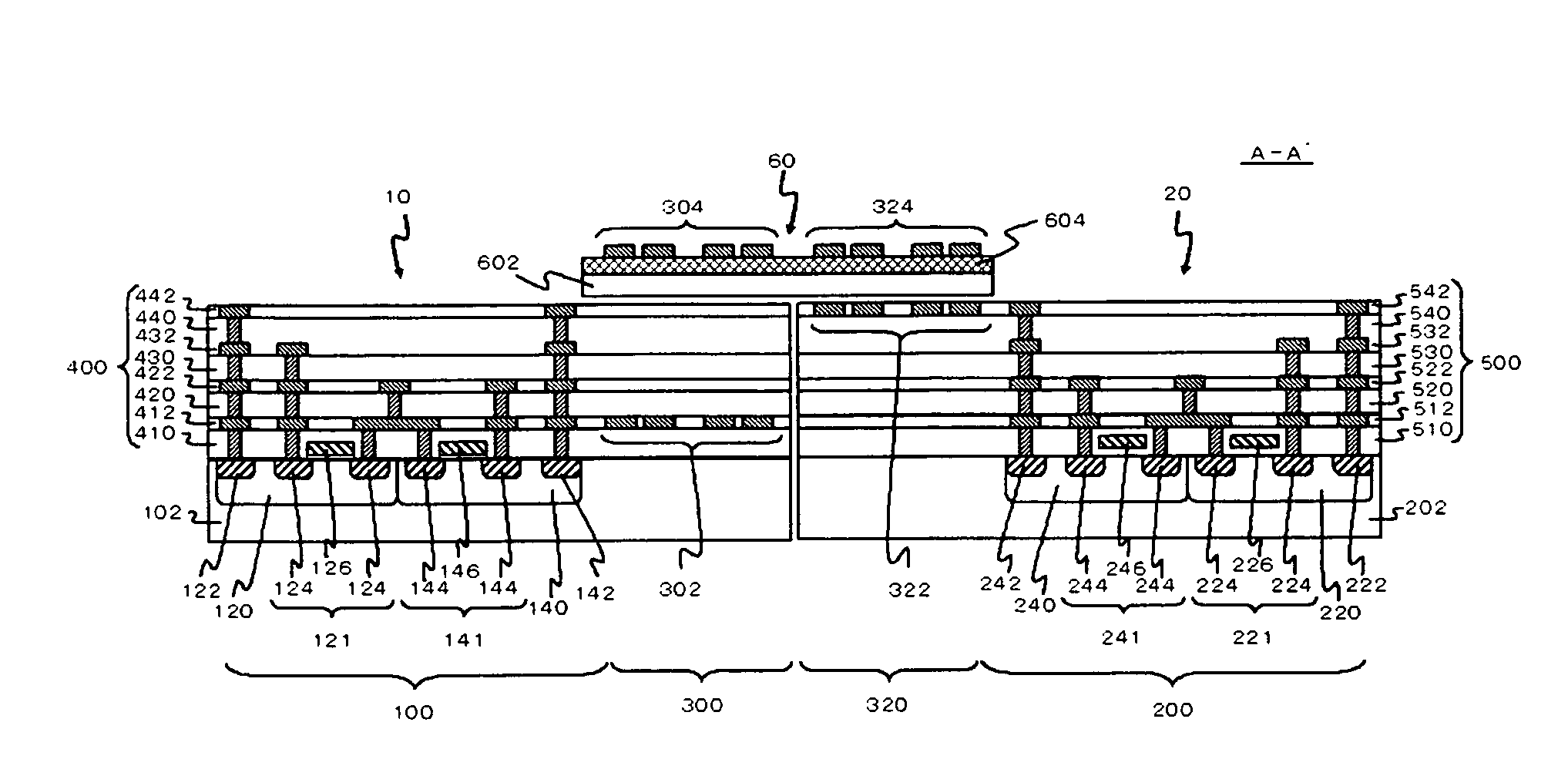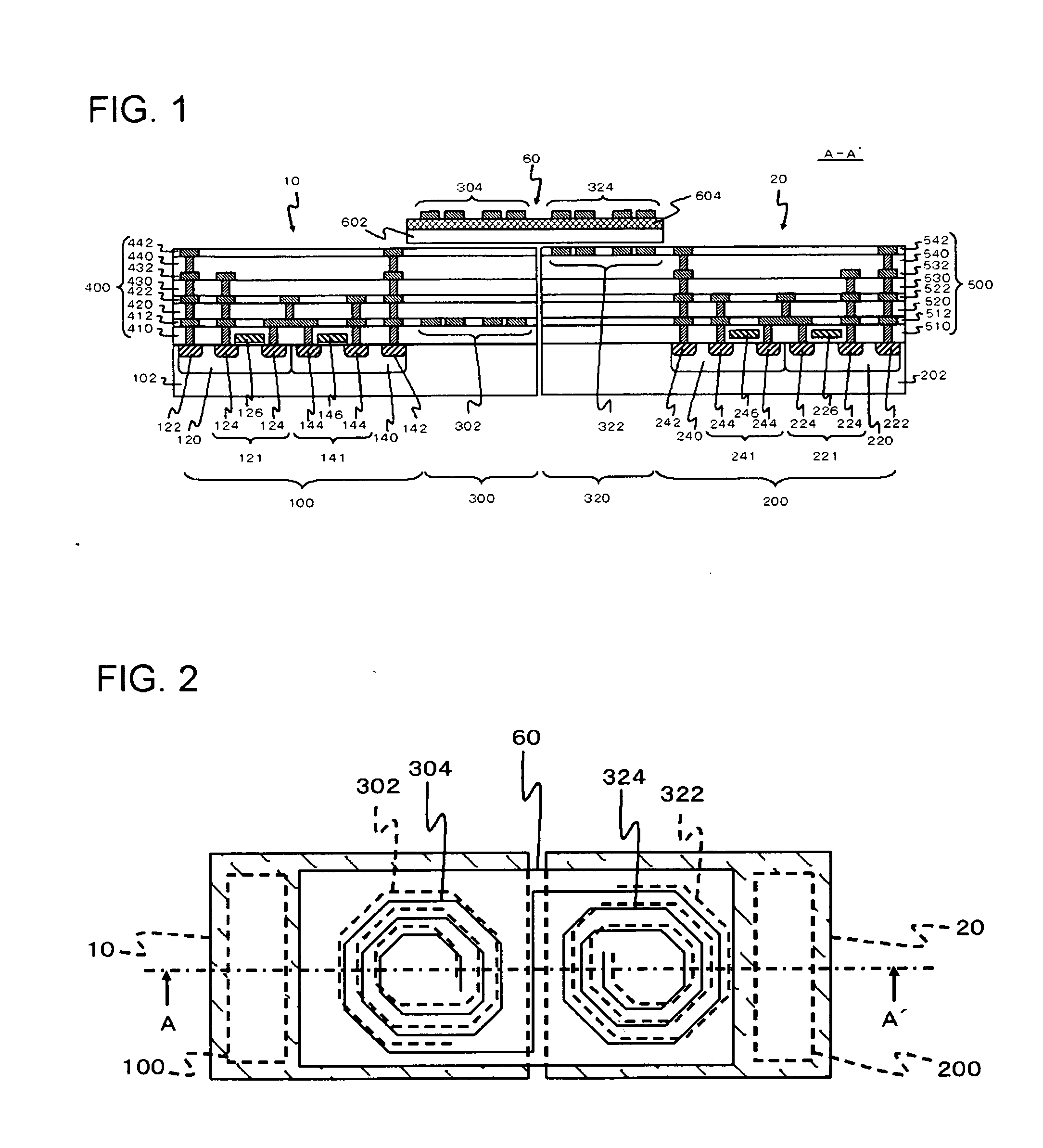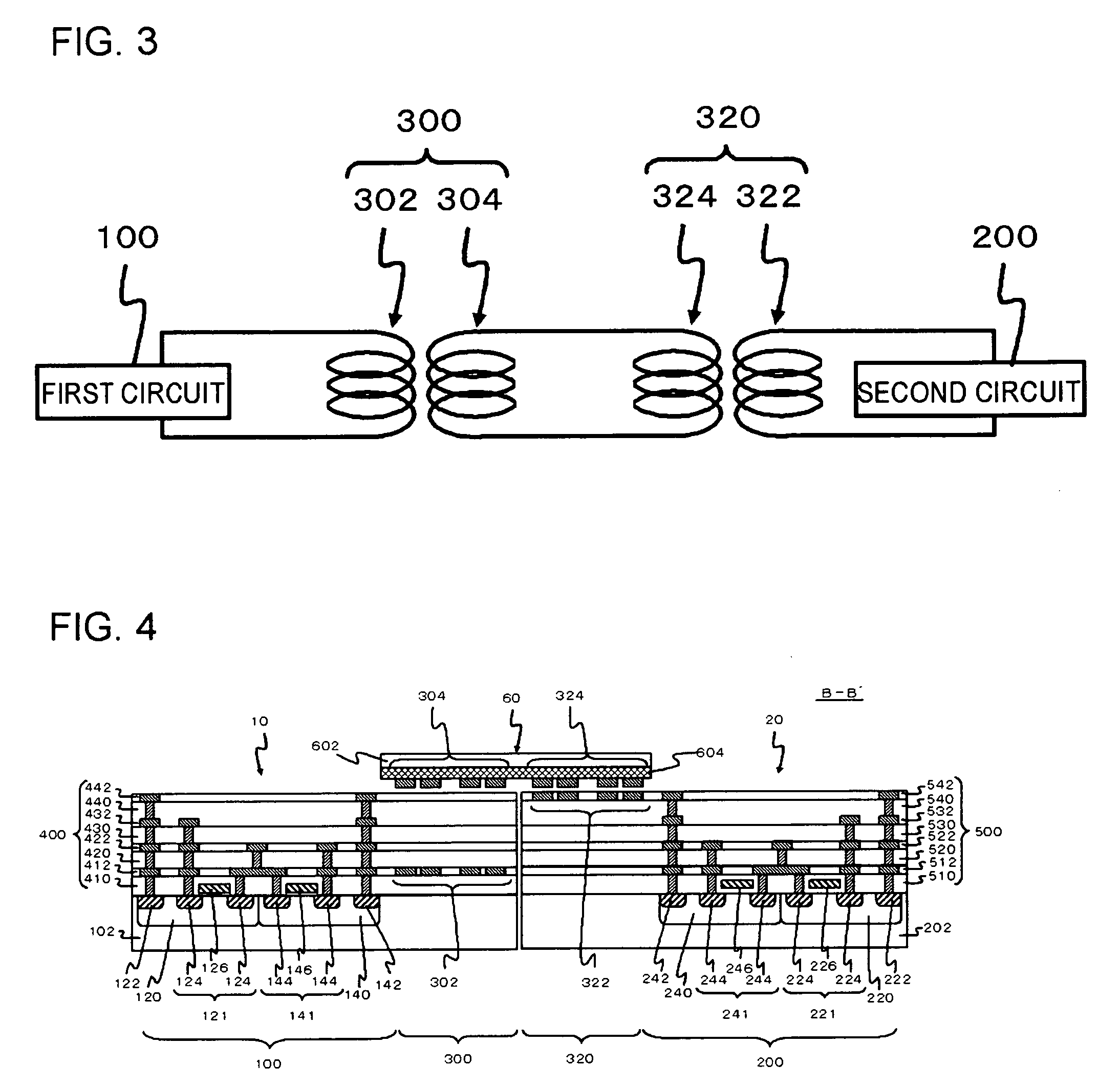Semiconductor device
a technology of semiconductor devices and semiconductors, applied in semiconductor devices, semiconductor/solid-state device details, electrical apparatus, etc., can solve the problems of inability to follow electric signals, difficult to reduce the size of each photo coupler, and signal attenuation, so as to maximize the efficiency of signal transmission from the first circuit to the second circuit
- Summary
- Abstract
- Description
- Claims
- Application Information
AI Technical Summary
Benefits of technology
Problems solved by technology
Method used
Image
Examples
first embodiment
[0036]FIG. 1 is a diagram showing the structure of a semiconductor device according to a first embodiment. FIG. 2 is a schematic plan view of the semiconductor device shown in FIG. 1. FIG. 1 is a cross-sectional view of the semiconductor device, taken along the line A-A′ of FIG. 2. For simplification of the drawings, the number of windings in each of the later described first inductor 302 and second inductor 322 in FIG. 1 differs from the number of windings shown in FIG. 2. This semiconductor device includes two semiconductor chips 10 and 20, and an interconnect substrate 60. The semiconductor chip 10 includes a multilayer interconnect 400, and the semiconductor chip 20 includes a multilayer interconnect 500.
[0037]The semiconductor chip 10 includes a first substrate 102, a first circuit 100, and a first inductor 302. The first substrate 102 is a semiconductor substrate such as a silicon substrate. The first circuit 100 generates signals to be transmitted. The first inductor 302 is f...
second embodiment
[0062]FIG. 4 is a cross-sectional view showing the structure of a semiconductor device according to a second embodiment. FIG. 5 is a schematic plan view of the semiconductor device shown in FIG. 4. FIG. 4 is a cross-sectional view of the semiconductor device, taken along the line B-B′ of FIG. 5. This semiconductor device has the same structure as the semiconductor device according to the first embodiment, except that the third inductor 304 and the fourth inductor 324 are formed on the face of the interconnect substrate 60 that faces the semiconductor chip 10 and the semiconductor chip 20.
[0063]According to this embodiment, insulation between the first circuit 100 and the second circuit 200 can also be secured while signals are being transferred with precision. Further, the fourth inductor 324 is formed on the face of the interconnect substrate 60 facing the semiconductor chip 20. With this arrangement, the distance between the fourth inductor 324 and the second inductor 322 is short...
third embodiment
[0064]FIG. 6 is a schematic cross-sectional view showing the structure of a semiconductor device according to a third embodiment. FIG. 7 is a schematic plan view of the semiconductor device shown in FIG. 6. FIG. 6 is a cross-sectional view of the semiconductor device, taken along the line C-C′ of FIG. 7. This semiconductor device has the same structure as the semiconductor device according to the first embodiment, except that a transmission / reception circuit 606 is formed in the face of the silicon substrate 602 having the interconnect layer 604 formed thereon.
[0065]FIG. 8 is an equivalent circuit diagram of the semiconductor device shown in FIGS. 6 and 7. The transmission / reception circuit 606 is provided between the third inductor 304 and the fourth inductor 324 in the circuit diagram. The transmission / reception circuit 606 includes a reception circuit and a transmission circuit. After demodulating a signal received by the third inductor 304 from the first inductor 302, the transm...
PUM
 Login to View More
Login to View More Abstract
Description
Claims
Application Information
 Login to View More
Login to View More - R&D
- Intellectual Property
- Life Sciences
- Materials
- Tech Scout
- Unparalleled Data Quality
- Higher Quality Content
- 60% Fewer Hallucinations
Browse by: Latest US Patents, China's latest patents, Technical Efficacy Thesaurus, Application Domain, Technology Topic, Popular Technical Reports.
© 2025 PatSnap. All rights reserved.Legal|Privacy policy|Modern Slavery Act Transparency Statement|Sitemap|About US| Contact US: help@patsnap.com



